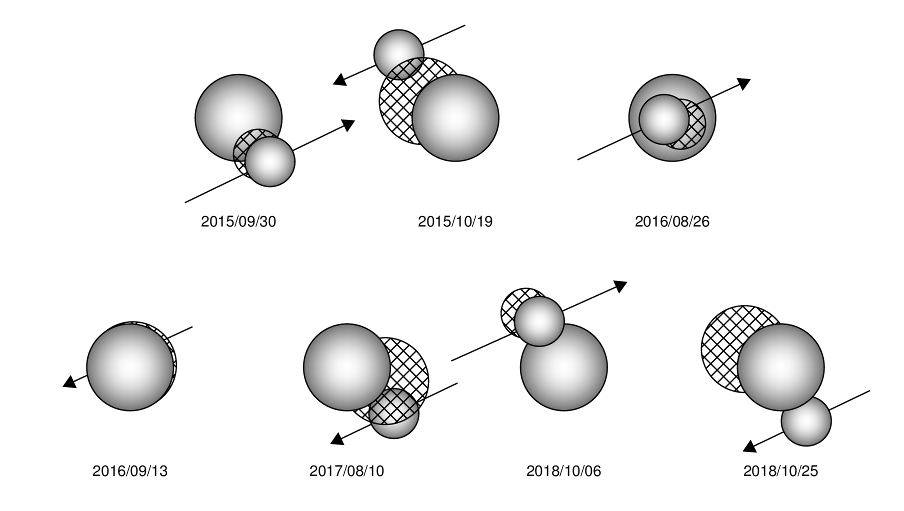
The Orbit of Transneptunian Binary Manwë and Thorondor and their Upcoming Mutual Events
Published in 2014: Icarus 237, 1-8.
W.M. Grundy1, S.D. Benecchi2, S.B. Porter3, and K.S. Noll4.
(1) Lowell Observatory, 1400 W. Mars Hill Rd., Flagstaff AZ 86001.
(2) Planetary Science Institute, 1700 E. Fort Lowell Suite 106, Tucson AZ 85719.
(3) Southwest Research Institute, 1050 Walnut St. #300, Boulder CO 80302.
(4) NASA Goddard Space Flight Center, Greenbelt MD 20771.
Abstract
A new Hubble Space Telescope observation of the 7:4 resonant transneptunian binary system (385446) Manwë has shown that, of two previously reported solutions for the orbit of its satellite Thorondor, the prograde one is correct. The orbit has a period of 110.18 ± 0.02 days, semimajor axis of 6670 ± 40 km, and an eccentricity of 0.563 ± 0.007. It will be viewable edge-on from the inner solar system during 2015-2017, presenting opportunities to observe mutual occultation and eclipse events. However, the number of observable events will be small, owing to the long orbital period and expected small sizes of the bodies relative to their separation. This paper presents predictions for events observable from Earth-based telescopes and discusses the associated uncertainties and challenges.

Fig. 2. Geometry as seen from Earth for the seven events observable at a solar elongation angle ≥140°. Celestial north is up and east is to the left. The hatched area is the shadow of the foreground object at the distance of the background object. The object radii shown here are 80 and 46 km, for Manwë and Thorondor, respectively. Arrows indicate the motion of Thorondor with respect to Manwë over 16 hours.